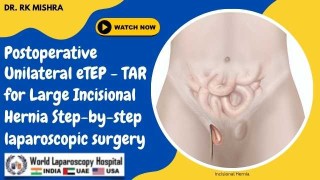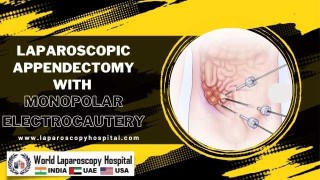Laparoscopic Roaders Knot
Add to
Share
325 views
Report
2 months ago
Description
Laparoscopic surgery has revolutionized modern surgical procedures, making operations less invasive, reducing recovery time, and minimizing postoperative complications. One of the key skills in advanced laparoscopy is intracorporeal and extracorporeal knotting, which allows surgeons to securely ligate tissues and vessels within the abdominal cavity. Among various knotting techniques, the Roeder’s knot stands out for its simplicity, reliability, and adaptability during laparoscopic procedures. What is the Roeder’s Knot? The Roeder’s knot is a sliding knot widely used in laparoscopic surgery. It is an extracorporeal knot, meaning it is tied outside the body and then carefully pushed into the abdomen through a laparoscopic port. The knot locks securely once tension is applied, making it ideal for ligating vessels, suturing tissues, or closing defects during minimally invasive surgeries. Technique Demonstrated by Dr. R. K. Mishra: Dr. R. K. Mishra, a pioneer in laparoscopic and robotic surgery, has extensively trained surgeons in the art of intracorporeal and extracorporeal suturing techniques, with a special focus on the Roeder’s knot. His method emphasizes precision, safety, and efficiency, ensuring that surgeons can perform knotting even in challenging laparoscopic environments. Key steps include: Preparation of Suture: Selecting an appropriate suture material and threading it through a laparoscopic needle. Extracorporeal Knot Formation: Creating a Roeder’s knot outside the abdomen using a standard sequence of loops. Insertion Through Trocar: Using a knot pusher to advance the knot into the abdominal cavity. Securing the Knot: Sliding the knot into position on the target tissue or vessel and applying tension to lock it firmly. Final Adjustment: Ensuring the knot is tight and secure without causing tissue damage. Advantages of Roeder’s Knot in Laparoscopy: Ease of Use: Can be prepared quickly outside the body. Secure Ligation: Provides reliable closure of vessels or tissues. Versatility: Suitable for gynecologic, urologic, and general laparoscopic procedures. Minimally Invasive: Reduces the need for larger ports and instruments. Dr. R. K. Mishra’s Contribution: Dr. Mishra has not only mastered this technique but also made it accessible to surgeons worldwide through hands-on workshops and laparoscopic training programs at the World Laparoscopy Hospital. His teaching emphasizes real-time demonstration, step-by-step guidance, and troubleshooting common challenges in knotting, making even complex laparoscopic suturing achievable for both novice and experienced surgeons. Conclusion: The Roeder’s knot remains a cornerstone technique in laparoscopic surgery, combining simplicity with strength. Under the guidance of experts like Dr. R. K. Mishra, surgeons can perfect this skill, enhancing operative safety, efficiency, and patient outcomes in minimally invasive surgery.
Similar Videos






